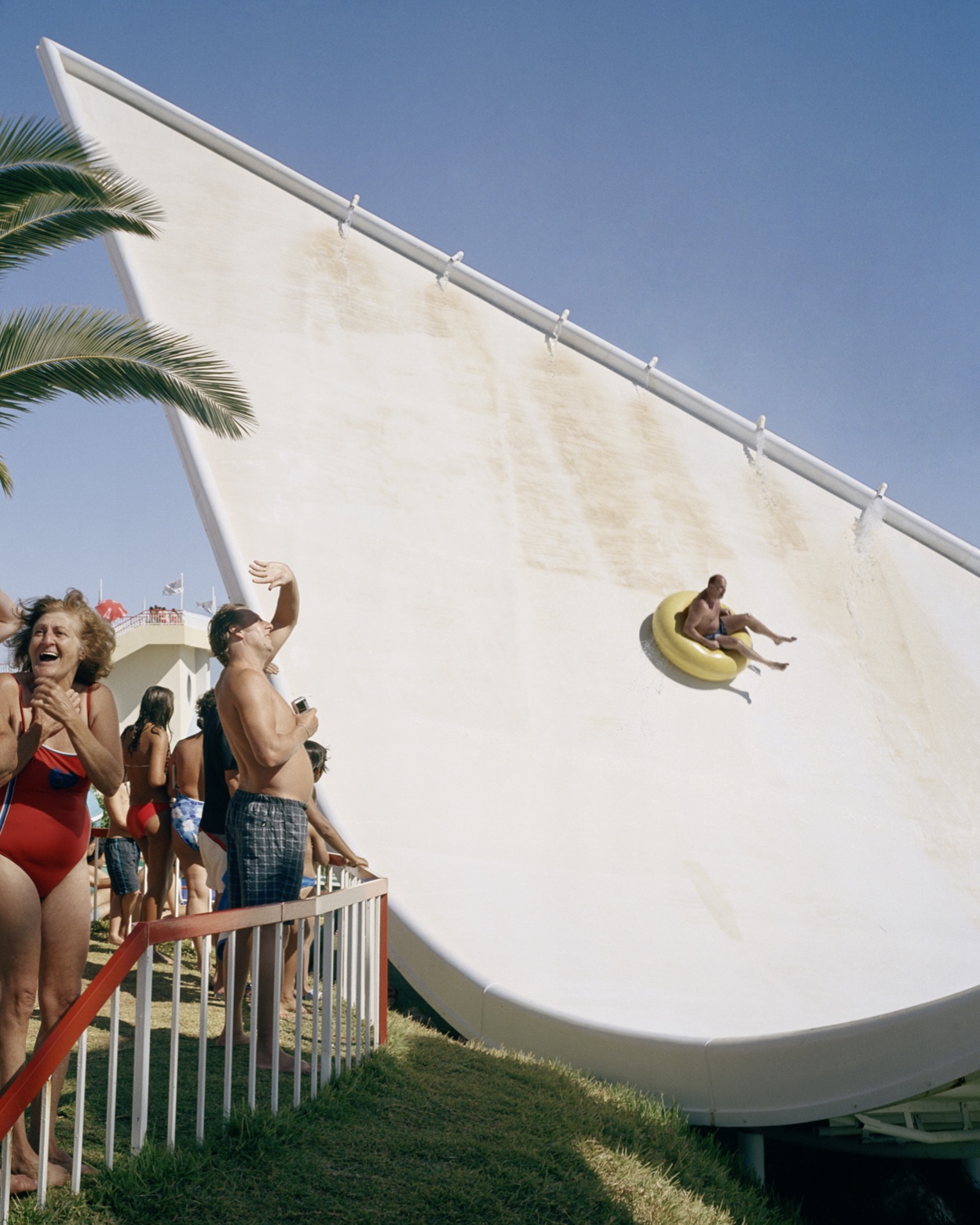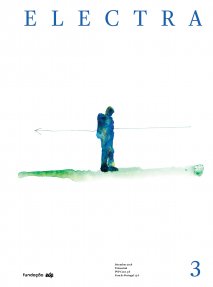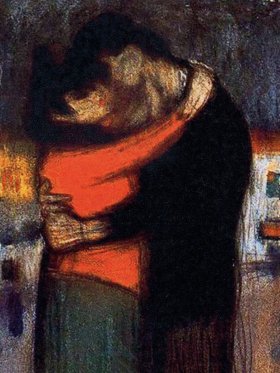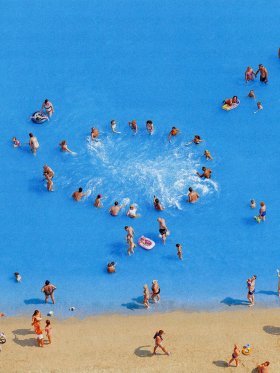Authentic
Tourism is also a discourse with its must-see commonplaces. A journey, in its most common sense, could be guided by the following references, in alphabetical order.

© Patrícia Almeida
Looking at it from the outside, the most entertaining thing about tourism is the authenticity game. Today, every tourist knows the rules: nothing is ‘authentic’ unless it is marked with proof of its authenticity (there is no shortage of tourist guides for the discovery of the authentic), announcing the paradox that the more authentic it is, the more touristy it is. The other two names for authentic are ‘typical’ (a word from a time when artificiality had triumphed) and ‘picturesque’ (literally something from a painting, before the arrival of photography). As the American Jonathan Culler pointed out in an essay in 1990 entitled The Semiotics of Tourism, ‘The distinction between the authentic and the inauthentic, the natural and the touristy, is a powerful semiotic operator within tourism. The idea of seeing the real Spain, the real Jamaica, something unspoiled, how the natives really work or live, is a major touristic topos, essential to the structure of tourism.’ In the language of semiotics, we can say that tourists always set off in search of signs and collect their iconographic representations (today, digital photos, before postcards, posters, souvenirs). Daniel Boorstin (1914-2004), former Librarian of Congress, avoids the semiotic sophistication of those who see signs everywhere and states, with all the hostility of a guardian of the cultural heritage: ‘The tourist desires caricature […]. He rarely likes the authentic (often unintelligible to him) product of a foreign culture. He prefers to have his provincial expectations met. A French ‘chanteuse’ singing in English with a French accent may seem more charmingly French than if she just sang in French’ (quoted by Culler). As we can see, Boorstin felt that the authentic tourist was a caricature, an image that has remained irreparable to the present day, when we have all been and will be tourists at one time or another. But being a tourist and a detractor of tourism is the most common of conditions.
Tourist city
The expression is used so much that we don’t even notice that it contains an aporia. Is a city defined as a tourist attraction because it has characteristics that bring in tourists or is it the result of a touristification process? In fact, no city is in itself touristy and tourism is that which cities live on and die from today. The way in which the issue is widely discussed these days means that it is essential to ascertain how much death a city can take and still stay alive and how much life can be preserved in it without causing its death. Urbicide as one of the effects of tourism is a hot topic at the moment. One of the synonyms of the ‘tourist city’ is the ‘historical city’, because it has the potential to provide a historical and cultural experience called heritage. Heritagisation is a great disease of our time and it is always the result of tourist calculation.
Criticism of tourism
Criticism of tourism (often confused with complaints) is not a recent phenomenon and is already of a ripe old age, as shown by the German poet and essayist Hans Magnus Enzensberger in an essay called ‘A Theory of Tourism’ published in Merkur magazine in 1958. Back then, a ‘theory of tourism’ was a ground-breaking task, which Enzensberger took on in his article, much influenced by the intellectual environment of the Frankfurt School. Enzensberger quoted some statements that were typical of a criticism of tourism that, read today, are delightful. For example, the German writer and philologist Gerhard Nebel (1903-1974) wrote, ‘Western tourism is one of the greatest nihilist movements, one of the west’s great epidemics […]. The swarms of these giant bacteria called travellers come covered in a wide variety of substances with the uniform, sparkling viscosity that goes by the name of Thomas Cook, so that we can no longer distinguish between the Cairo of Honolulu and the Taormina of Colombo […]. The European disease breaks out in a series of abscesses. A country that opens up to tourism closes up metaphysically, and then offers a scenario but none of its magic power.’
Right from the start, criticism of tourism comes not only from reactionary but also from progressive sectors of the criticism of capitalism. Both of them often exhibit snobbery, an implicit demand for exclusivity in the right to visit other places. This demand to be distinguished from the travelling plebs was first found by Enzensberger in a book published in London by A. I. Shand in 1903. It deplored the fact that travel wasn’t like in the good old days. ‘Forty years ago, there were pleasant hotels and no unpleasant crowds. Tourists were a rarity and the plebs who travel today at low cost were nowhere to be seen. There has been a terrible change in the last half-century. Tourists of yesteryear would rub their eyes in disbelief at what they saw if they went to Basel or Geneva today. Railways cover the whole country. Tunnels have been dug in the Alps. Funiculars have been built to any peak that boasts a view. Huge hotels have sprung up all over the place. Simple hideaways have been turned into comfortable hotels. The European playing field has been invaded by sightseeing people and the sanctuaries where only the old night of chaos reigned have been profaned and lowered to playgrounds for the multitudes.’ If Enzensberger had gone back even further in his archaeology of the criticism of tourism, he would have found this pearl in the diary of a reverend called Robert Kilvert, ‘Of all the harmful animals, the tourist is the most harmful’ (quoted by Marco d’Eramo in Il selfie del mondo). Comparisons with animals as an insult to tourists are still used today, as a group of tourists is almost always a ‘herd’.
Disenchantment
The joy and happiness that a tourist is obliged to show (an unhappy, bad-tempered tourist is a contradiction in terms) and that the locals, forgetting about when they were tourists, regard as a sign of idiocy and a regression to childhood, are not generally long-lasting feelings. Nothing is as familiar to tourists as tiredness, boredom and disappointment, loathe as they are to admit, while fulfilling their tour programme, that their satisfaction is far lower than they expected. Awareness of this usually only arrives après coup, after they get back from the ‘adventure’ that never was. Ulysses was a happy traveller because he returned home after a long, adventurous journey. Today’s tourists set off with the enthusiasm of people who wish they didn’t have to come home, but when they get back they are actually ashamed of their naivety and think that they shouldn’t even have gone.
Holidays
In working society, a holiday is a time for recovery. A holiday is totally devoted to leisure, free time for recuperation and preparation for going back to work, and not idleness, that virtuous condition that in Roman civilisation gave birth to letters, arts and sciences. Tourism is the most common manifestation of this scheduled time off from work. Tourists are people of leisure par excellence, whether they are members of Club Med, who buy leisure as a luxury item, or backpackers, who don’t believe that their leisure should be turned into a product or dream of being part of a genuine experience. A simple equation tells us that the longer we work, the more leisure is scheduled and the more tourism enters this schedule. It seems paradoxical, but a society that reduced working time would cause tourism to go into a decline.
Grand tour
In the 18th century, it was a habit or even an obligation among the English nobility to send young aristocrats on a long journey of initiation, emancipation and education (even from a sexual point of view). This experience, intended to transform an inexperienced young man into a ‘compleat gentleman’, was called the Grand Tour. It produced written accounts that enriched the vast field of travel literature. There is obviously a huge difference between the Grand Tour and modern-day tourism (radicalising or reducing this difference depends on one’s opinion of tourism). But no archaeology of tourism can ignore this experience, which was reserved for young men of noble birth and spread from England to Europe in the 18th century.
Let it not be thought that the Grand Tour generated widespread complacency. In The Wealth of Nations, Adam Smith (1723-1790) vehemently attacked the Grand Tour. ‘In England it becomes every day more and more the custom to send young people to travel in foreign countries immediately upon their leaving school, and without sending them to any university. [...] In the course of his travels he generally acquires some knowledge of one or two foreign languages; a knowledge, however, which is seldom sufficient to enable him either to speak or write them with propriety. In other respects he commonly returns home more conceited, more unprincipled, more dissipated, and more incapable of any serious application either to study or to business. [...] By travelling so very young, by spending in the most frivolous dissipation the most precious years of his life, at a distance from the inspection and control of his parents and relations, every useful habit which the earlier parts of his education might have had some tendency to form in him [...] is almost necessarily either weakened or effaced.’
Lord Byron
This English romantic poet (1788-1924) can quite rightly be considered the archetype of the modern tourist (which is how Enzensberger sees him in A Theory of Tourism). He travelled in Europe, especially in Italy (and also in Portugal, where Sintra owes him much of its romantic aura), as did any aesthete worthy of the name. But he did not stop at the contemplative attitude of immobilising aestheticism. He threw himself wildly into all the advantages of the noble English traveller, experiencing a liberating independence and giving in to the call of excess in his sexual adventures with men and women.
Low cost
Mass tourism as it is today would not be possible without budget airlines and other low-cost services. The evolution of transport and greater speed after the Industrial Revolution soon awakened a nostalgia, which was doomed to be replaced by a subsequent nostalgia, and so on. The current nostalgia for the long train journey through landscapes and across borders goes way back in time to the mid-19th century, when John Ruskin said, ‘It transmutes a traveller from a man into a living parcel.’ The traveller hardly knew the names of the cities through which he had passed and only fleetingly recognised them from the bell towers of the most famous cathedrals that looked like trees along a very distant road (quoted by Jonathan Culler in The Semiotics of Tourism).
Let us now look at some figures. In 1990 there were around 450 million tourists and in 2002 they numbered 750 million. In 2020 they are expected to reach two billion (statistics from Thierry Paquot in Le voyage contre le tourisme). Tourism today is the main business worldwide. The question is knowing how far a system that generates entropy can go. Proof of this is the permanent chaos at airports. The ease of purchasing a trip today makes actually taking it an ordeal right from the start. Excess mobility is leaving us immobilised and low cost is becoming too costly.
General mobilisation
This idea, which evokes totalitarian political organisation, has sometimes served to define methods for adapting cities, places and the landscape to the requirements of tourism. The consideration that even locals and their lifestyles may be necessary scenarios for tourists shows that tourism parodies general mobilisation. We find this military analogy in Enzensberger’s A Theory of Tourism in 1958, though it has survived successfully to the present day. This is how Enzensberger develops his analogy: ‘Tourism’s main headquarters are like command centres that plan troop movements.’ This means that tourist guides are real combat manuals, lessons in tactics and strategy for the theatre of operations.
Sightseeing
What features does a city, place, landscape or monument have that make it a tourist attraction? There is a simple answer to this question, which warranted the formality of a theory, the theory of sightseeing, as it was called in the 1960s, when it became a hot topic in the French magazine Communications. Sightseeing is a tautology that acquires all its pertinence and justification because it means seeing something that is seen, i.e. something that is a must-see because a lot of people have already seen it. And this is like a certificate that the places are awarded.
Thomas Cook (1808–1892)
This British gardener and carpenter was a pioneer. He organised his first trip from Loughborough to Leicester for the members of an institution in July 1841. Four years later, he set up a travel agency, as it would be called today, which resulted in international expansion. Thomas Cook invented a tourist travel model for a bourgeois clientele very much in 19th-century style. The tourism industry enshrined it as a brand that spread all over the world. Aristocratic abhorrence of tourism in its late-19th-century manifestations regarded Thomas Cook as the height of abomination.
Tourism/Tourist (lexical approach)
According to Enzensberger’s A Theory of Tourism, the word ‘tourist’ appeared in 1800 and ‘tourism’ in 1811. They are two English neologisms. But, as often happens with etymologies, the first documented use of a word is subject to error and falsifications. It is therefore easy to find other authors who mention other dates, which are usually earlier. Stendhal is an important milestone in establishing the word ‘tourist’ in literature in his Mémoires d’un touriste, two volumes of accounts of travel in France, published in 1838.
Tourism à la carte
Like many other activities, tourism finds its fields of specialisation, conquers territories, invents routes and subjects itself to Rule Number One of commerce, which is giving customers what they want. The difference between tailor-made and general tourism lies in the specialist-area delimitations that distinguish, or frown upon, those frequenting them. Business tourism, sport tourism, sex tourism, religious tourism, extreme tourism, ethical tourism – there are countless forms and there is no church without its faithful.
Tourist/Traveller
The difference between tourism and travel and a tourist and traveller is the subject of interminable discussion (see in this dossier the article by Jean-Didier Urbain, who goes to the heart of this contention, adopting a controversial perspective). Underlining the difference between a traveller and a tourist almost always means exalting the old, obsolete kind of journey and deploring the caricature to which tourism has reduced travel. Indeed, someone once wrote that there had been no journeys, only tourism since 1939. Whenever anyone highlights the difference between a tourist and a traveller it is to disparage the former as a grotesque manifestation of low-quality travellers. It is difficult to avoid this caricature, because the tourist industry has completely conformed to it by making it compulsory.
Venice
The myth of La Serenissima occupies an important place in the history of tourism, though this occurred later than is often thought. All discussions on the subject end up in Venice’s Grand Canal. It is true that the city of the Doges was a compulsory stop on the Grand Tour. But the city completely given over to the monoculture of tourism, which has lost inhabitants in inverse proportion to the growth in daily crowds of tourists, only began to reach crisis point in the 1980s. Saving Venice from sinking was a concern that mobilised megalomaniac engineering projects. But saving the city from the tourist invasion is a much more difficult task. Venice is the oldest city centre in the world that is completely closed to road traffic. This and the fact that it has remained much more intact than any other city, given the natural limitations on construction, mean that it has kept an aura that is the most precious object sought out by tourism. Even full of tourists, it never loses its melancholy air. They obviously don’t know or pretend not to know that Venice is a city of masquerade and pretence. This is why it is the most invisible city for the millions of tourists that go there to see it. The gondolieri singing ‘O Sole Mio’ are the stars of this game of pretence, masquerades and narcissism.
*Translated by Wendy Graça




Share article